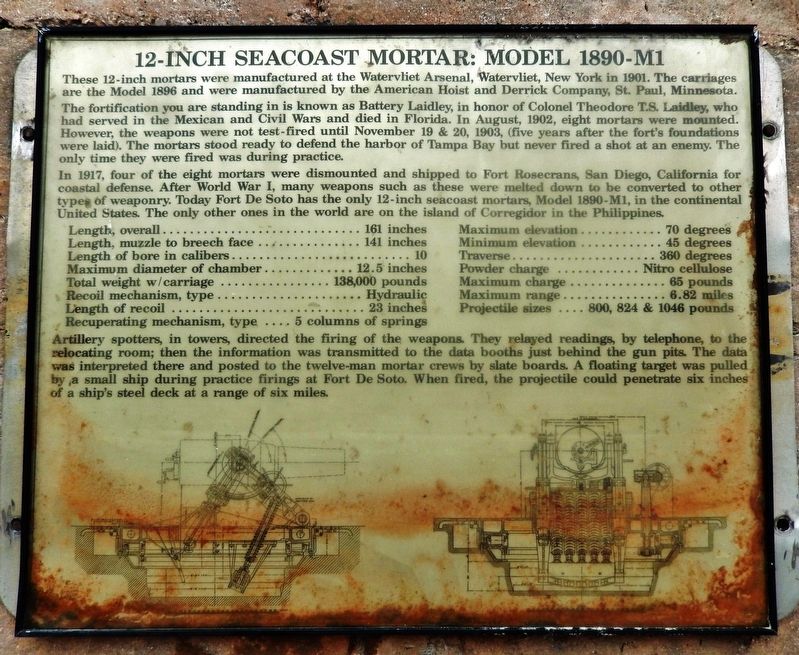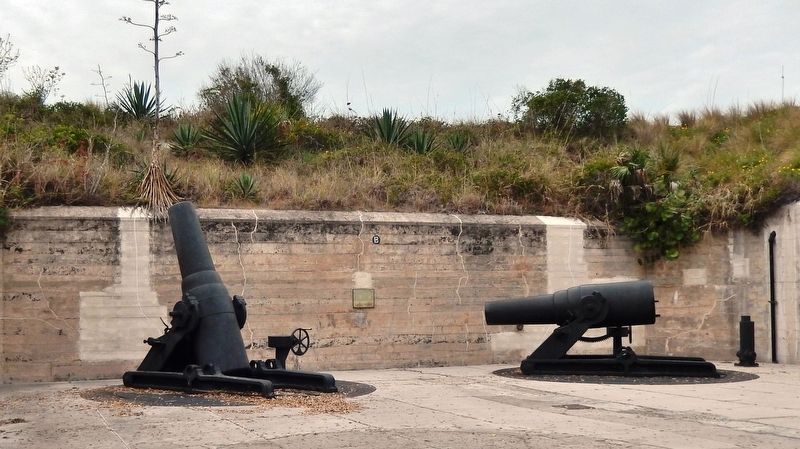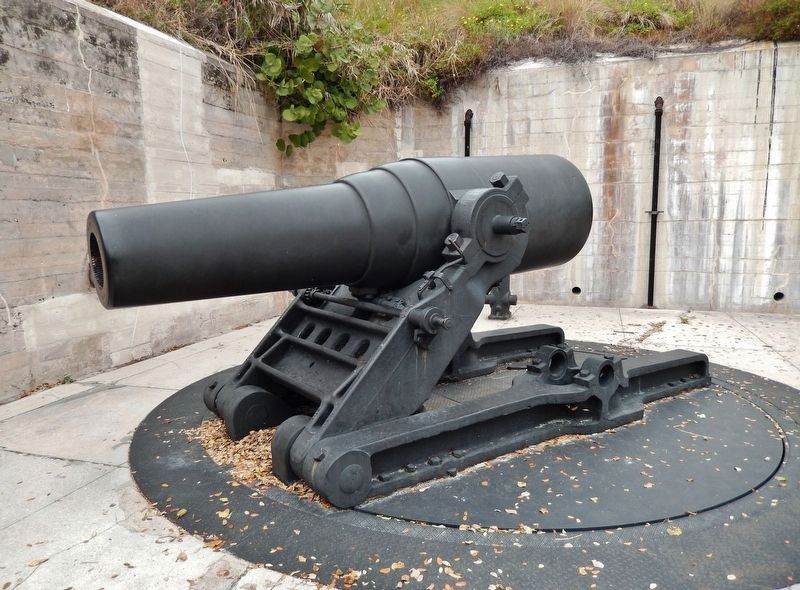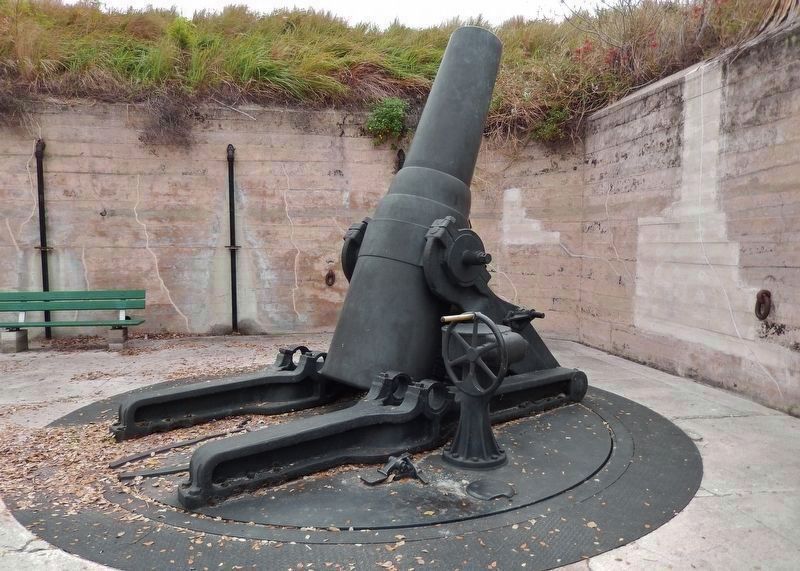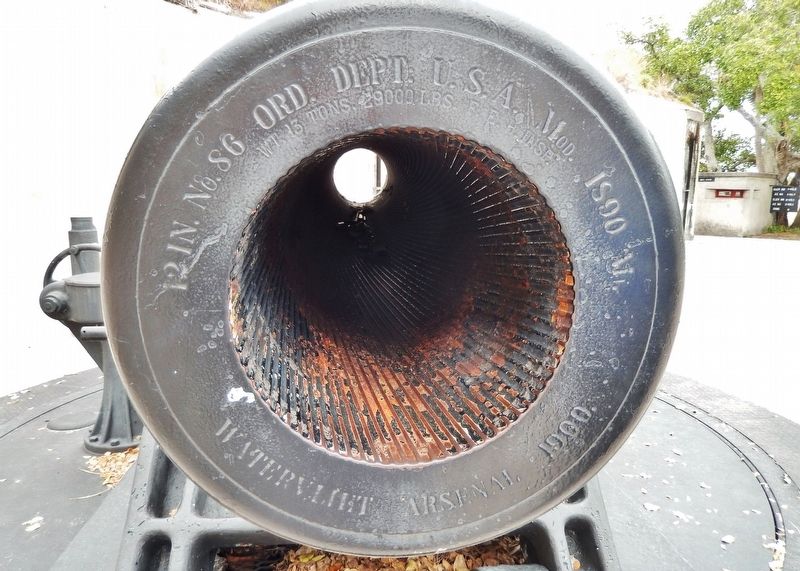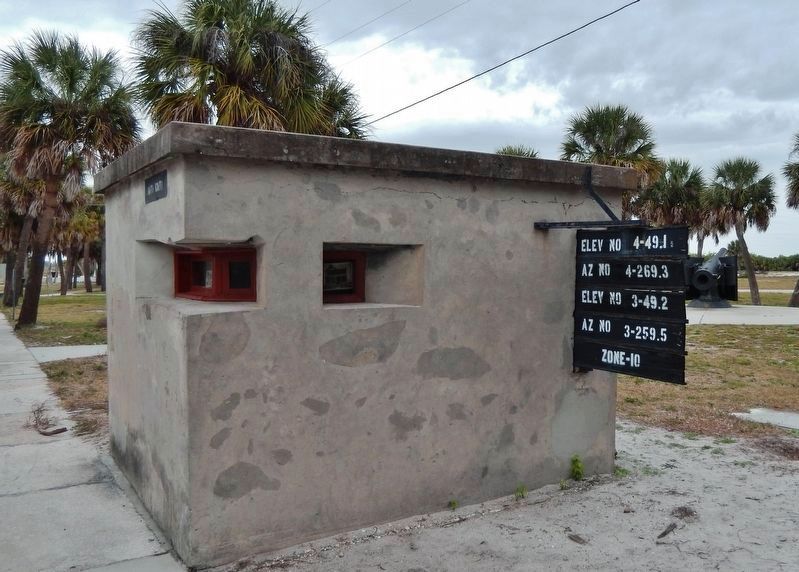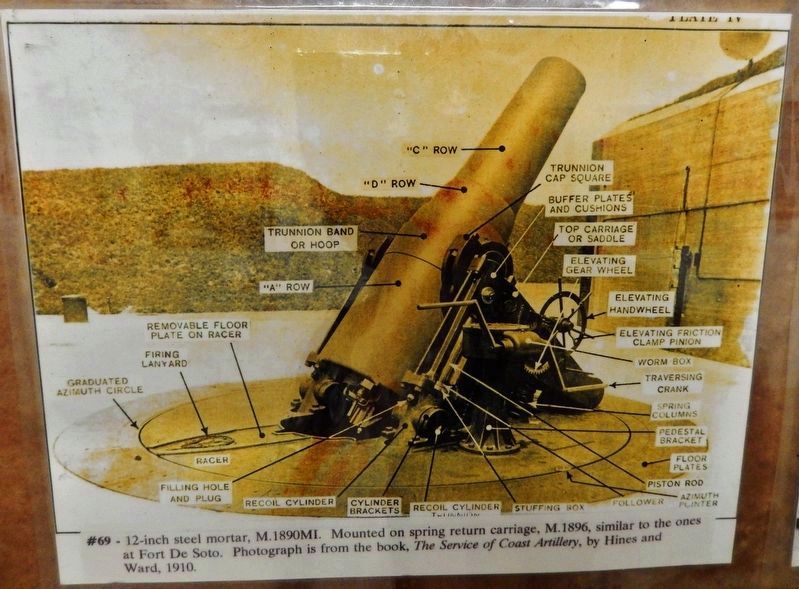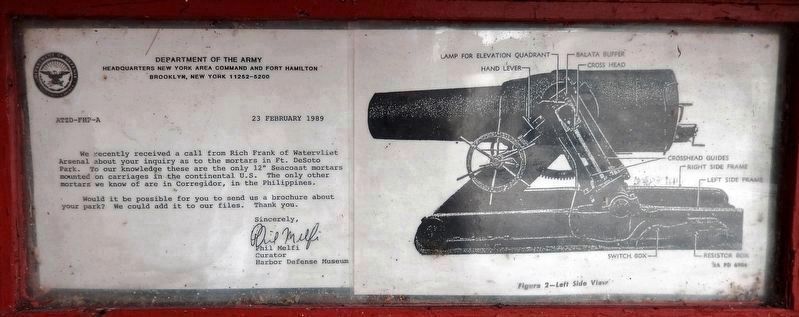Tierra Verde in Pinellas County, Florida — The American South (South Atlantic)
12-inch Seacoast Mortar: Model 1890-M1
The fortification you are standing in is known as Battery Laidley, in honor of Colonel Theodore T.S. Laidley, who had served in the Mexican and Civil Wars and died in Florida. In August, 1902, eight mortars were mounted. However, the weapons were not test-fired until November 19 & 20, 1903, (five years after the fort's foundations were laid). The mortars stood ready to defend the harbor of Tampa Bay but never fired a shot at an enemy. The only time they were fired was during practice.
In 1917, four of the eight mortars were dismounted and shipped to Fort Rosecrans, San Diego, California for coastal defense. After World War I, many weapons such as these were melted down to be converted to other types of weaponry. Today Fort De Soto has the only 12-inch seacoast mortars, Model 1890-M1, in the continental United States. The only other ones in the world are on the island of Corregidor in the Philippines.
Length, overall: 161 inches
Length, muzzle to breech face: 141 inches
Length of bore in calibers: 10
Maximum diameter of chamber: 12.5 inches
Total weight w /carriage: 138,000 pounds
Recoil mechanism, type: Hydraulic
Length of recoil: 23 inches
Recuperating mechanism, type: 5 columns of springs
Maximum elevation: 70 degrees
Minimum elevation: 45 degrees
Traverse: 360 degrees
Powder charge: Nitro cellulose
Maximum charge: 65 pounds
Maximum range: 6.82 miles
Projectile sizes: 800, 824 & 1046 pounds
Artillery spotters, in towers, directed the firing of the weapons. They relayed readings, by telephone, to the relocating room; then the information was transmitted to the data booths just behind the gun pits. The data was interpreted there and posted to the twelve-man mortar crews by slate boards. A floating target was pulled by a small ship during practice firings at Fort De Soto. When fired, the projectile could penetrate six inches of a ship's steel deck at a range of six miles.
Topics. This historical marker is listed in these topic lists: Forts and Castles • Waterways & Vessels. A significant historical year for this entry is 1901.
Location. 27° 36.916′ N, 82° 44.157′ W. Marker is in Tierra Verde, Florida, in Pinellas County. Marker can be reached from Anderson Boulevard (State Highway 679) 1˝ miles west of Pinellas Bayway South, on the left when traveling west. Marker is located within Battery Laidley at Fort De Soto Park, just north of the Gulf Fishing
Pier parking lot. Touch for map. Marker is at or near this postal address: 3500 Pinellas Bayway South, Saint Petersburg FL 33715, United States of America. Touch for directions.
Other nearby markers. At least 8 other markers are within 5 miles of this marker, measured as the crow flies. Fort De Soto Batteries and Military Post (within shouting distance of this marker); Spanish-American War Cannons from Egmont Key (within shouting distance of this marker); Spanish American War Memorial (within shouting distance of this marker); Fort De Soto Quartermaster Storehouse Museum (about 600 feet away, measured in a direct line); Tierra Verde Mound (approx. 3.8 miles away); USCGC Blackthorn Bow Anchor (approx. 4.3 miles away); Sunshine Skyway Bridge Collapse (approx. 4.3 miles away); Florida Honors and Remembers our POW’s and MIA’s (approx. 4.4 miles away). Touch for a list and map of all markers in Tierra Verde.
Also see . . .
1. 12-inch Coast Defense Mortar (Wikipedia). The 12-inch coast defense mortar was a weapon of 12-inch (305 mm) caliber emplaced during the 1890s and early 20th century to defend US harbors from seaborne attack. The M1890 M1 (Model of 1890, Modification 1) 12-inch mortar was one of the most powerful coast artillery pieces of its era, and was the most common type emplaced to guard U.S. harbors. The M1890M1 mortar was most often installed
on an M1896 carriage. The mortar and its carriage weighed a total of 78.5 tons. (Submitted on April 9, 2019, by Cosmos Mariner of Cape Canaveral, Florida.)
2. Seacoast Artillery In Action. This film clip from around 1915 shows a firing drill on the 12-inch mortars of Battery Howe, part of the harbor defenses of San Francisco. Heavy shells (on shell carts) being wheeled up to the breeches of the mortars and rammed home, the powder bags being tossed into the breeches after them, the crew clearing the immediate area while the chief of the breech raises his arm to indicate "ready to fire," and the mortars being fired electrically from outside the area pictured. The shock wave from firing one of these huge mortars was often so strong that it knocked doors off nearby magazines and barracks, and broke windows in nearby neighborhoods. (Submitted on April 9, 2019, by Cosmos Mariner of Cape Canaveral, Florida.)
Credits. This page was last revised on April 9, 2019. It was originally submitted on April 8, 2019, by Cosmos Mariner of Cape Canaveral, Florida. This page has been viewed 564 times since then and 51 times this year. Photos: 1, 2, 3. submitted on April 8, 2019, by Cosmos Mariner of Cape Canaveral, Florida. 4. submitted on April 9, 2019, by Cosmos Mariner of Cape Canaveral, Florida. 5. submitted on April 8, 2019, by Cosmos Mariner of Cape Canaveral, Florida. 6. submitted on April 9, 2019, by Cosmos Mariner of Cape Canaveral, Florida. 7, 8. submitted on April 8, 2019, by Cosmos Mariner of Cape Canaveral, Florida.
